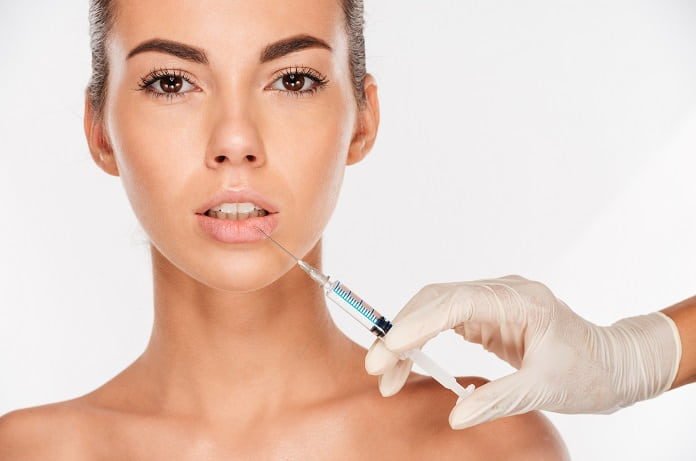From cadaver experiments, researchers compare the efficacy of delivering hyaluronic acid gel injections to the upper lip through needle or micro-cannula injections. The most desirable results are correlated with the infiltration of hyaluronic acid to the muscle layers of the lip.
One of the hallmarks of the aging face is the loss of upper lip volume. Our skin loses its moisture and elasticity, and this is even more obvious in the moisture-rich mucous regions of the lips. Coupled with the shrinking of the surrounding fat and soft tissue, the result is a decrease in the volume of the upper lip, and the wrinkles on the skin surrounding the lips only further accentuates this volume loss. Aside from these age-related changes, current standards of beauty also place an emphasis on fuller, robust lips; these reasons have contributed to the ever-increasing popularity enhancing the lips through hyaluronic acid gel injections.
Hyaluronic acid (HA) gel is most commonly used by clinicians to address these anatomical changes, owing to the predictability of its results and its high safety profile. Achieving the best outcomes also involves understanding lip aesthetics: instead of haphazardly infiltrating the lip with HA and simply ‘plumping it up’, injecting it in specific areas (the vermillion junction or where the ‘dry’ and ‘wet’ parts of the upper lip meet) creates the most natural result, and thus the best cosmetic profile.
Currently, dermatologists and plastic surgeons deliver HA into the upper lip by one of two methods: either by multiple injections using needle and syringe or by a microcannula, where a small tunnel is created from the corner of the lip and entire area is infiltrated.
In theory, the deeper the infiltration the better: injecting too superficially produces unsightly bumps on the upper lip—but too deep into the lip muscle may produce little discernible effect. But just how deep should HA go to achieve the best results, and which method (injection or microcannula) works best?
To answer these questions, researchers performed experiments on eight cadavers, and the upper lip areas were either augmented through needle injections or microcannulae infiltration. These cadavers underwent these enhancements while simulating what is done during office procedures. The enhanced lip areas were then sectioned and examined to determine the depth and distribution of the HA gel.
Under the microscope, it was shown that for those that exhibit the best cosmetic results, the HA gel was located within the lip muscle (the orbicularis oris muscle), rather than simply under the skin or mucosa of the lip. And while both delivery methods appear to achieve this, a more uniform distribution was seen in those who underwent microcannula infiltration. The results were recently published in the journal Opthalmic Plastic & Reconstructive Surgery.
The results of the study can serve as a guide for clinicians in choosing the best technique in their lip enhancement procedures. The study also opens possibilities of further exploring the way hyaluronic acid gel is delivered, to hopefully determine the best way to produce the most optimal results. What is for sure is that this study on looking for ways to refine the methods and techniques using HA gel won’t be the last, so long as there will be those who want to get those plumper, fuller lips.
Written by Jay Martin, M.D.
Reference: Blandford et, al. “Micro anatomical Location of Hyaluronic Acid Gel Following Injection of the Upper Lip Vermillion Border: Comparison of Needle and Microcannula Injection Technique.” Ophthalmic Plastic Reconstructive Surgery 2017; Vol. XX, No. XX. Doi: 10.1097/IOP0000000000000960



